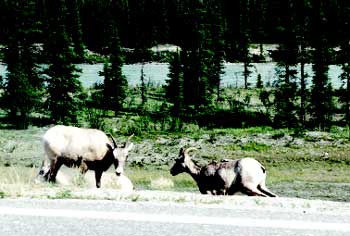Chapter 3: How Recreation Impacts Affect Key Characteristics of Riparian Ecosystems
The following paragraphs discuss recreation impacts to soil, plant species diversity, aquatic life, and wildlife.
Soil MoistureRunoff and percolation patterns of natural areas within a developed site are often changed by recreation development. Abnormally low levels of soil moisture in certain areas and higher-than-normal levels in others, cause plant stress. Roads that are elevated above the natural grade can cut off water bodies from flood plains. Roads adjacent to streams or meadows act as levees, preventing natural flooding or redirecting surface flow movement. Improperly constructed roads may block or reduce water that normally seeps or flows from the upslope to the stream, thus reducing flow to the stream, drying out the soil, and reducing vegetation; that is, negatively affects the riparian ecosystem. Roads constructed across streams or meadows can dam water and drown vegetation on one side, and dry out vegetation on the other side. See figures 35a and 35b.

Figure 35a-Upstream. After this dirt road was built, trees on
both
sides died.
Trees on the upstream side died from too much water
and those on the downstream
side from
too little water.
Pavement, structures, vehicle use, and barren soils that result from overuse introduce more heat into the riparian ecosystem. Added heat dries the ground, weakens plants, and warms the water, which can have a negative effect on aquatic species. Heat can lead to less and less ground water availability for plants and for recharging streams and lakes during dry seasons and, ultimately, to aquatic and riparian habitat loss.
Soil and Vegetation DiversityHuman foot traffic in concentrated areas can be as destructive as cattle traffic. Horseback riding and vehicle use, including cars, trucks, OHVs, trailers, and mountain bicycles, also contribute to soil compaction. See figure 36. The potential for damage increases from human to pack stock to motorized vehicles. "A controlled experiment on a sloping mountain grassland (Poa pratensis and Festuca idahoensis) in Montana found that 200 motorcycle passes removed twice as much vegetation as the same number of passes by a horse and nine times as much vegetation as 200 hiker passes" (Weaver and Dale 1978). Motorized recreation causes "extreme and deeper soil compaction. [and] are (sic) significant agents of erosion" (Cole as quoted in Alexander and Fairbridge 1999).
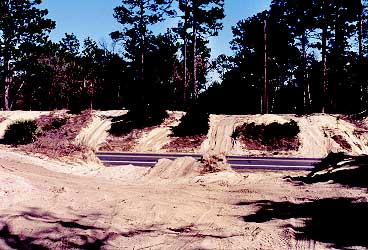
Figure 36—Damage caused by OHV use on the Ocala National Forest.
Soil compaction begins with trampling and treading, which includes crushing, bruising, breaking, and uprooting vegetation. See figure 37. Manning (1979) lists a seven-step soil impact cycle that includes "the scuffing away of leaf litter and other organic material on the soil surface. Soil litter cover is pulverized when exposed to trampling and is then easily blown or washed away. ... Ordinarily, this surface material serves to cushion layers of soil from trampling and absorbs large amounts of rainfall. Washing [surface runoff] of this surface exacerbates the problems of compaction and runoff, and the cycle continues in this manner" (Manning 1979).

Figure 37-This user-made ATV trail detours
around a locked gate.
It crosses
one of the
few salmon-spawning streams in the area
and creates edges in the
riparian forest.
Loss of vegetative cover, duff cover, and the subsequent loss of the organic horizon or topsoil by flooding and/or by continued human disturbance, such as trampling, exposes mineral soils. Furthermore, trampling frequently increases light intensities and temperatures, both above and below the soil surface (Cole as quoted in Alexander and Fairbridge 1999). Increased light intensity and temperature disturb the physical, biological, and chemical characteristics of the soil, resulting in lower productivity and lower water infiltration rates. See figures 38, 39, 40, 41, and 42.
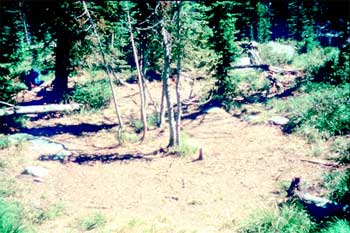
Figure 38—Use at this dispersed site has isolated young trees.
The stump
of one is
visible.

Figure 39-An ever-expanding dispersed site.

Figure 40-This Alaskan trail is in a rain forest, so it is always
wet.
Hikers
walk on the edges of the trail, trampling
plants,
ever widening the trail, and
exacerbating the
problems.
The trail is also compacted,
muddy, and rutted.
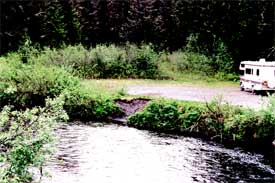
Figure 41-This dispersed parking lot is growing because there
are
no boundaries.
The vegetation is becoming more and more
trampled. Angler access to the river
has caused a large chunk
to erode. High flows eventually will cause further
erosion
at this
vulnerable spot.

Figure 42-Windfall Lake Trailhead. There is no defined boundary
and therefore
no edge to this parking area. Parking areas with no
boundaries expand when
they become
crowded or as drivers
seek to park under
shade.
Pore spaces in the soil aerate roots and hold water. Compaction packs the soil particles closer together and eliminates pore spaces (Cole as quoted in Alexander and Fairbridge 1999). Compaction allows less infiltration, which leads to lower soil moisture content, fewer seeds germinating, and lower rates of seedling survival. "Young and Gilmore (1976) found that even when relatively high levels of organic matter and soil nutrients were present, they may be unavailable, perhaps due to high soil compaction and low soil moisture and oxygen content" (Manning 1979). Reduced or eliminated pore space also weakens plant vigor and reduces root penetration. Compaction also decreases soil-building plant litter and the number of arthropods, earthworms, and beneficial bacteria and fungi present (Ferren and St. John 2000).
The following diagram illustrates the cumulative effects caused by trampling and treading as vegetation is weakened and soil is compacted. See figure 43.

Figure 43-Soil/vegetation impact diagram (Manning 1979).
The edge of a stream or the transition from riparian ecosystem to upland forest creates a natural edge. See figure 44. Plant type and density vary on edges as compared to the interior, an area away from an edge. Trails and ever-expanding camp and picnic units or staging areas increase the exposure of the interior by creating new edges. Roads create their own edge effects and their impacts can be great. Longer roads potentially have a greater impact on the nearby environment. These edges are more open to disturbance by humans and to the influx of nonnative species, both plant and animal, by ".providing pathways for travel and by having newly disturbed areas to colonize in" (Falk 2000). They encourage nonnative wildlife species at the expense of native species that require interior habitat for nesting and shelter. The balance shifts, skewing the ecology.
Aquatic EcosystemsMost aquatic ecosystems depend on adjacent riparian ecosystems for food, shelter, cover, and for maintaining proper water temperature. See figure 45. When riparian ecosystems lose structure, opportunities for erosion and sediment deposition into water bodies increase. See figure 46. Vehicle crossings and pollution from motorized equipment such as boats, jet skis, and gasoline generators used for recreational instream mining also impact the aquatic ecosystems.

Figure 45-Aquatic ecosystem. Woody debris is present; trees
and shrubs overhang
the bank, creating a microclimate that helps
keep the water temperature appropriate
for that stream; insects
on the vegetation drop into the water to feed the
fish; and the
banks are stabilized by the vegetation.

Figure 46—Trampling and boat wakes are eroding this lakeshore.
Fish productivity is intricately linked to riparian plant composition. Plants provide shade to maintain proper water temperature and shelter fish. Many aquatic insect species spend a part of their life cycles on riparian vegetation before dropping into the water to be eaten by fish and other aquatic species. When riparian vegetation is missing from the water's edge, much less food is available for fish and other aquatic species.
WildlifeComplex structure and function, species diversity, and age composition of riparian habitats are essential elements for sustaining healthy wildlife populations (McKee and others 1996). The presence of water and rich plant diversity encourages animal diversity. Less and/or weakened vegetation means less available vegetative matter (structure) for animals and microbes to use for food and shelter (Knight and Gutzwiller 1995). Wildlife also affects plant diversity because it pollinates plants and transports seed. See figure 47.
The presence of humans, their paraphernalia, and their machines affects the health of the riparian ecosystem and the welfare of wildlife. Knight and Cole cite four main ways that humans impact wildlife: (1) exploitation (hunting, trapping, collection), (2) disturbance (intentional or not; for example, wildlife viewing, hiking through an animal's territory), (3) habitat modification, and (4) pollution (Knight and Gutzwiller 1995). See figure 48.

Figure 48-Partially hiding used toilet paper under a rock is
not only unsightly
and unsanitary; it could also attract and
sicken
wildlife. It may signify ignorance
about
proper waste
disposal procedures and overuse of an area.
"Long-term effects of repeated disturbances range from an increase in the population of one or more species tolerant of human activities to the extirpation of one or more populations" (Stanley 2000). These disturbances affect the diversity and dynamics of the ecosystem. Even seemingly innocuous activities such as picnicking and wildlife viewing can have longlasting effects on wildlife. Encounters increase the metabolism of animals, causing them to burn more calories and expend more energy (Stanley 2000).
Although the human impact on wildlife is not well researched, some data exists. For instance, wildlife viewing or photography can cause animals to change their normal behaviors. Steve Cain, senior wildlife biologist at Grand Teton National Park, notes that "encounters with humans increase stress on animals that are already struggling to survive. As the fight-or-flight instinct kicks in, some animals may flounder through deep, heavy snow to get away. Even if an animal sits still in an encounter with humans, its metabolism is probably racing and its energy stores are rapidly declining.
Biologists have quantified this effect using heart-rate monitors. By some estimates, an ungulate may expend a week's worth of energy during a single encounter with a human" (Berwyn 2001). Other examples of data concerning human impact on wildlife are as follows:
- Winter recreation can be more detrimental
than warm-season recreation for wildlife because animals are weak and stressed
in the winter. Compacted snow is deadly for small mammals, such as voles.
For example, in meadows snow forms an insulating layer that keeps the ground
warm
enough for animals to survive the winter. When snow is compacted, it loses
its insulating value and causes the ground temperature to drop and the animals
to
die. Snowmobiles are particularly damaging to frozen shrubby vegetation,
which is brittle and snaps off when run over. (Cole as quoted in Alexander
and Fairbridge
1999). Winter recreation can cause loss of habitat and food.
- Klein (1993)
found that photographers exited their vehicles and moved closer to wildlife
more frequently
than other wildlife viewers, causing unforeseen problems such as one that
Klein (MacIvor and others 1990) points out: "Predators learn to follow the human scent
trails to
nest sites" where humans had ventured (Knight and Gutzwiller 1995).
- Yarmoloy and others (1988) noted that radio-collared mule deer altered their feeding and spatial-use patterns and showed a loss in reproductivity a year following harassment with all-terrain vehicles (ATVs) (Knight and Gutzwiller 1995).
Bears and their habitat are affected by human behaviors, such as recreational-use patterns and habits. Bears have learned to associate humans and camping with food. Rather than spend their time foraging, as nature would have it, they seek out improperly stored food caches for easy meals. As a result, nuisance bears may have to be killed or be relocated from their territories. They and other animals also are susceptible to human disease and can become ill from exposure to trash and food left behind by humans (Cole as quoted in Alexander and Fairbridge 1999). See figure 49.
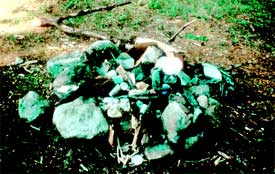
Figure 49—This campfire is full of nonbiodegradable trash that
should
have been
packed out. It may be a hazard to wildlife.
See appendix A for a matrix that summarizes potential impacts of recreation facilities and activities to riparian forests.




